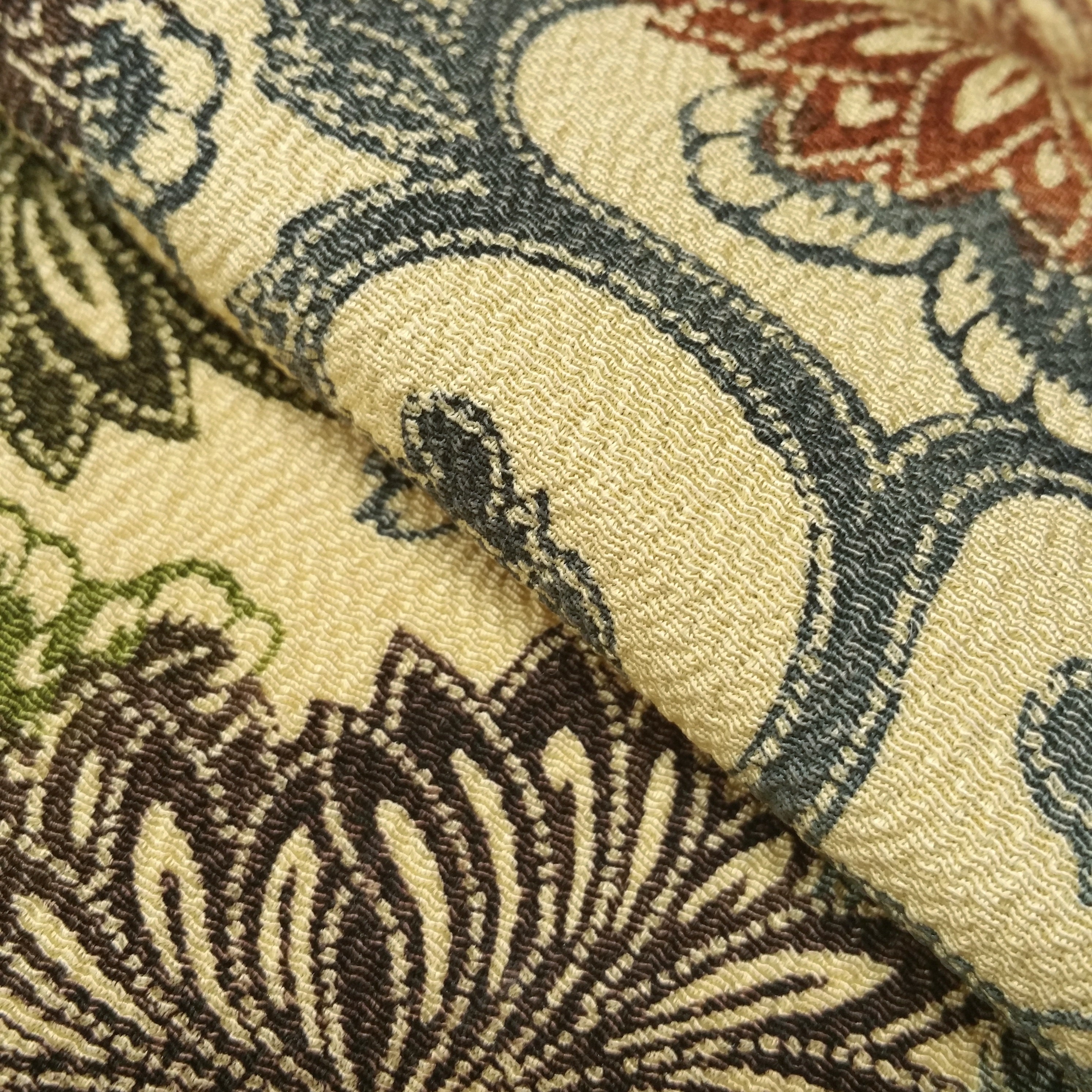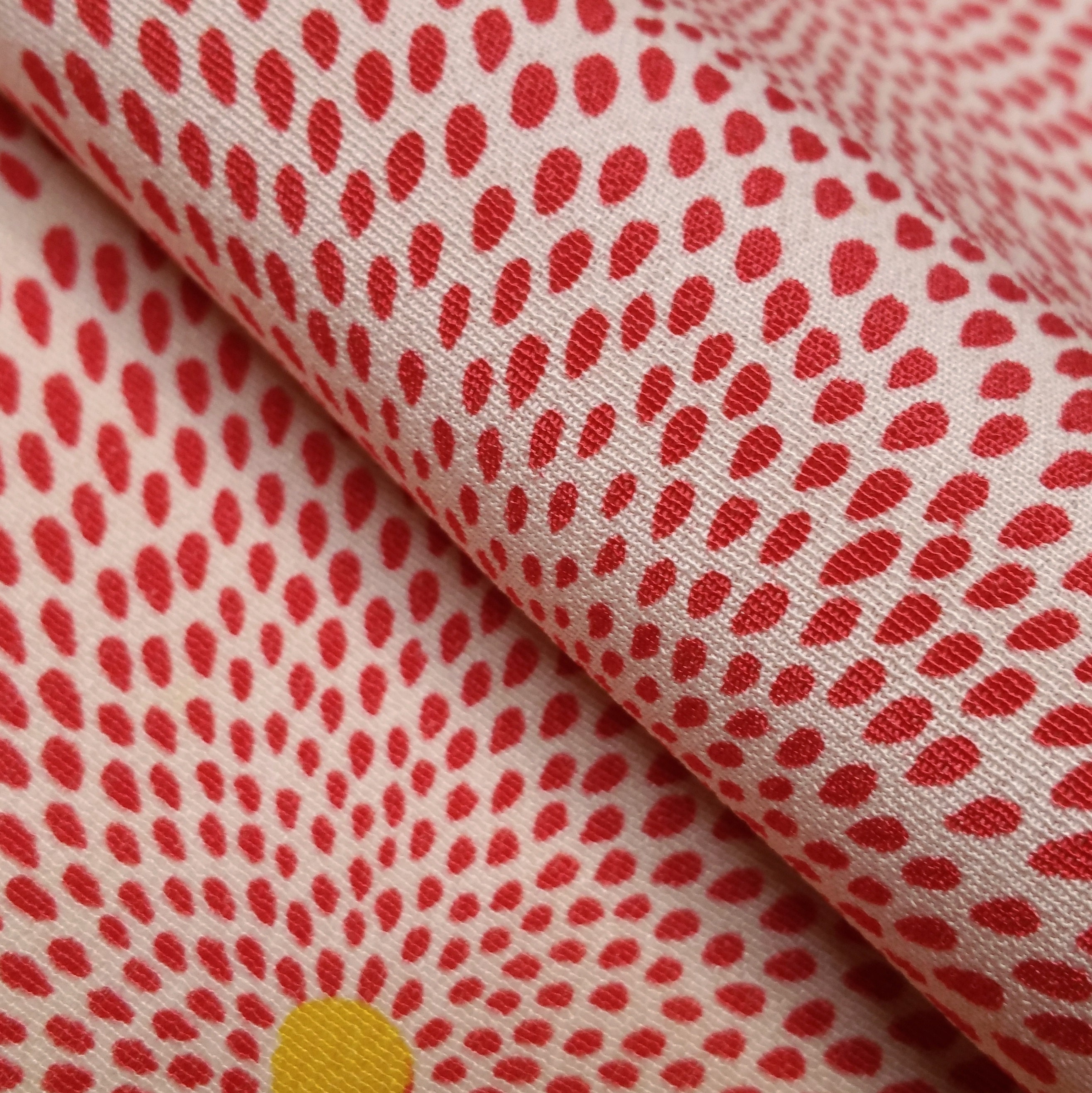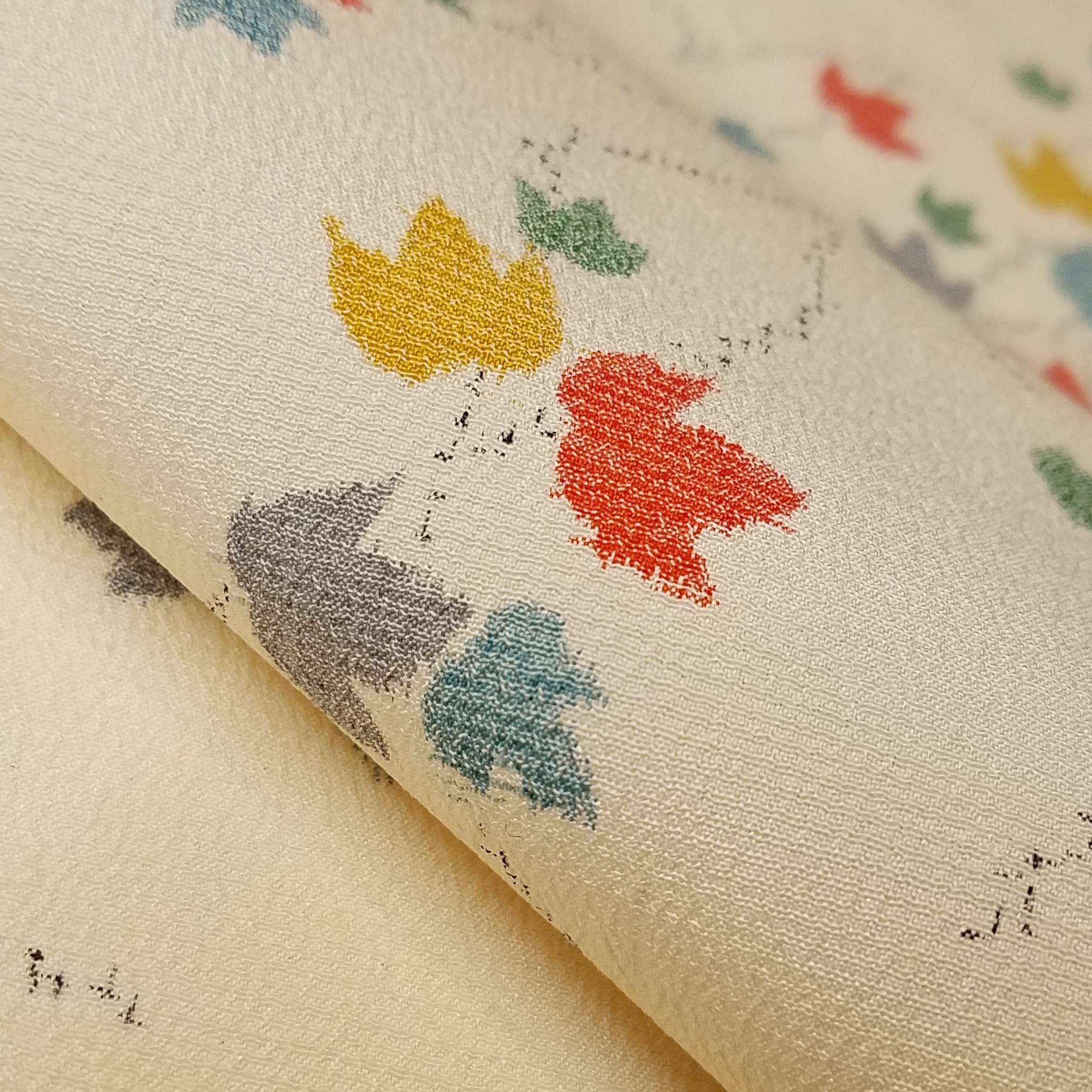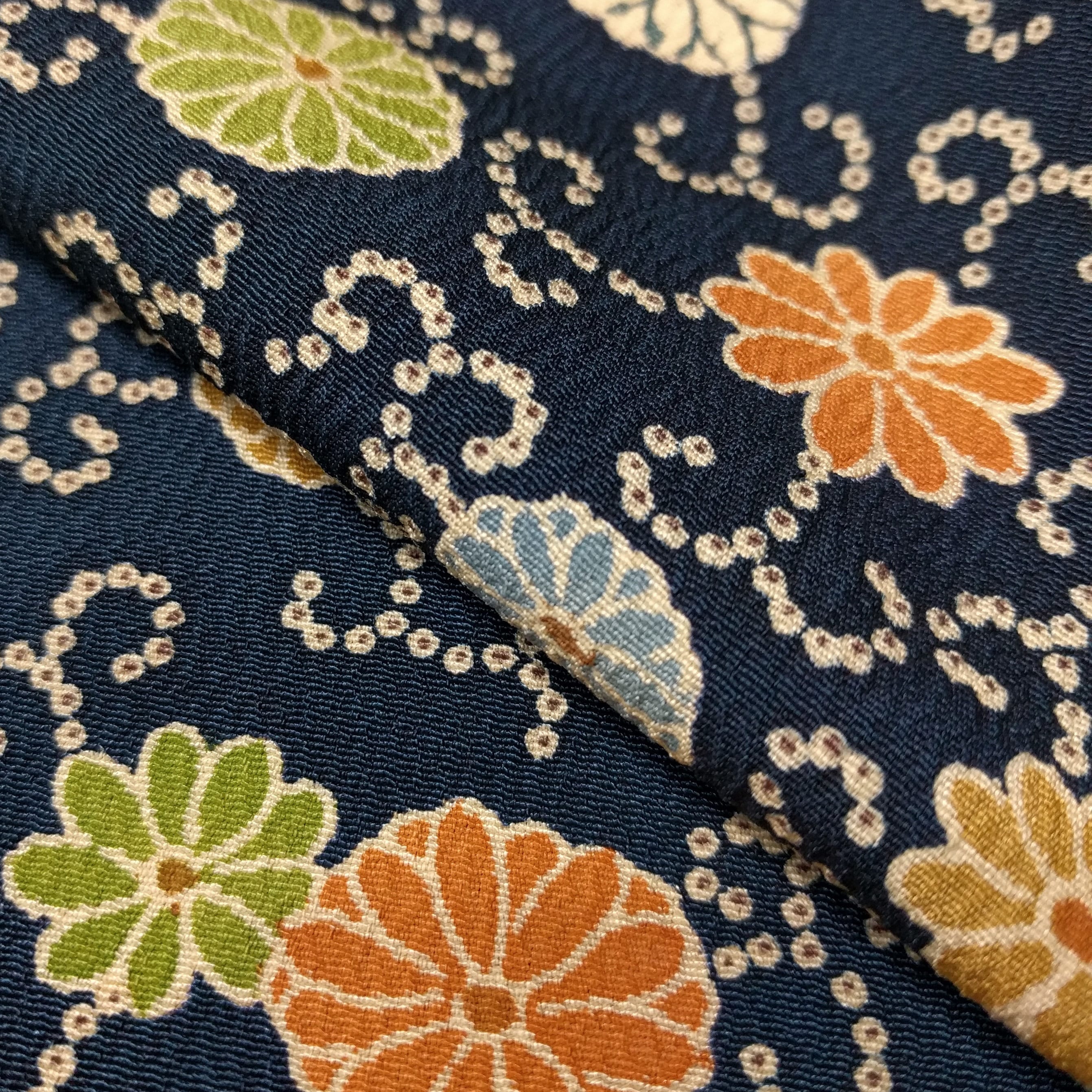Japanese chirimen fabric is a very popular and desirable fabric due to it's wonderful texture and drape, however the term "chirimen" can refer to a weaving technique and the crepe fabric. There are a number of fabrics that are created using this weaving technique such as: kinsha and omeshi. Each of these fabrics has a different drape and texture making them more or less suitable for certain projects.
Japanese crepe fabrics have wonderful, deliberate wrinkles on the surface. These wrinkles or "shibo" are created by twisting the weft (horizontal) threads using what is called the chirimen weaving technique. The weft threads are also thicker than the warp (vertical) threads and the tension of the weft threads helps to create the distinctive texture of the silk. Crepe fabrics are a "plain" weave fabric as opposed to a "twill" or "damask" weave fabric.
Japanese artisans developed the chirimen weaving technique in the 16th century after seeing newly imported crepe fabrics from China. This technique is used to produce chirimen, kinsha and omeshi fabrics.
Chirimen fabric is the most widely used Japanese crepe silk. It became a popular silk for use as kimono because it is difficult to crease and has a wonderful drape.
Various regions of Japan began to produce their own chirimen fabrics by varying the twist and plys of the woven fibers. For example, Tango chirimen is created by using left hand twisted (Z-twist) warp and right hand twist (S-twist) weft. Hana chirimen is created by alternating Z-twist and S-twist weft threads. Chirimen fabrics are usually dyed after being woven and are classified by the difference in yarn, construction and size of the shibo.

A closeup of a chirimen crepe can be seen in the photo above. The typical, wavy crimps can be seen. Notice that the design is printed, not woven.
The classifications of chirimen fabric are as follows:
A) Kawari Muj: finest shibo crimps. This may be created using one twisted weft thread followed by an un-twisted thread.
B) Hitokoshi Chirimen: fine shibo crimps
C) Futakoshi Chirimen (also called Kodai): less fine shibo crimps created by 2 "Z - twist" weft yarns alternating with 2 "S-twist" weft yarns
Mon chirimen is a final chirimen that is woven in such a way to create a pattern in relief over the fabric.
Most of the chirimen I see today is "Hitokoshi" chirimen.
Chirimen fabric is the type of fabric that is most used for tsumami kanzashi, bags, dolls and furoshiki.
Kinsha silk is a lighter variation of chirimen. Kinsha is created using the chirimen weaving technique but it is different than chirimen fabric and it doesn't fall into the same classification system as above. It is created by twisting the warp threads less than regular chirimen and it also uses a much finer silk. This creates a fabric with a smoother, but still wrinkled, texture that is lighter-weight and more appropriate for summer kimono. Kinsha silks are also usually dyed after being woven. I have read that kinsha silk is no longer produced therefore any modern crepe kimono is most likely not going to be a kinsha silk.

Kinsha silk, seen in the above photo, also has a wavy, crimped texture but the shibo are much less prominent than chirimen. This produces a more fluid, finer silk. Kinsha silks often have a dyed or painted pattern.
Omeshi is a heavy crepe fabric. Like kinsha, it is also woven using the chirimen weaving technique. Omeshi may use a raw silk for the warp and the weft thread is dyed, waxed and twisted prior to weaving. The "kasuri" or "ikat" weaving technique is used to create the pattern in the silk.

Omeshi also has the distinctive shibo creases however it uses the kasuri weaving technique to create the pattern in the fabric. If you look closely at the omeshi silk seen above you can see that the leaves are a woven design and not printed.
Omeshi is much stiffer than chirimen, with a crisp drape.
Omeshi kimono are usually of a very high quality. Omeshi fabric is not commonly produced today and bolts of omeshi cloth can be very difficult to find.
Chirimen fabric is probably the most popular fabric produced using the chirimen weaving technique. I find that it is also my favorite as it has a wonderful texture and a drape with enough body to be suitable for many projects. The multiple ply thread used to create the fabric also makes a fabric with a nice weight that is also sturdy enough to prevent wear and tear. This makes chirimen fabric perfect for clothing, home decor, accessories and quilting projects. Kinsha sacrifices it's durability for it's fluid drape. Most of the vintage, kinsha silk kimono that I possess have small holes in the areas that receive the most wear, such as the sleeves and collars. Chirimen fabric rarely appears to have worn areas such as this. The wonderful hand and drape of kinsha does makes it suitable for skirts and blouses. Omeshi does the opposite, sacrificing it's drape for it's durability. This fabric can be visually stunning but I find that it is usually a bit too stiff and roughly textured for most projects. Omeshi can be suitable for home decor projects that do not require a fluid drape, such as table runners.

